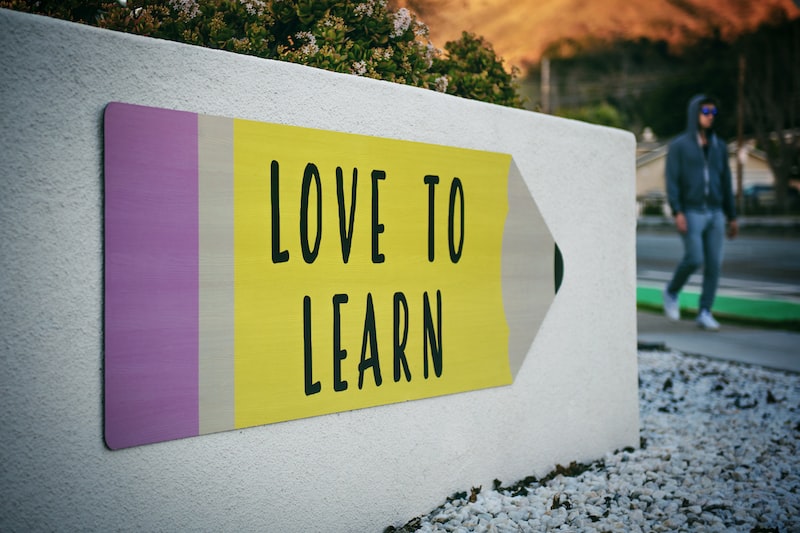Have you ever wondered how we can create a sustainable future for our planet? The answer lies in environmental education. Schools play a crucial role in nurturing young minds to become environmentally conscious individuals. By integrating sustainability into the curriculum, we can empower students with the knowledge and skills needed to protect and preserve the environment.
One of the key aspects of environmental education is raising awareness about the importance of sustainability. Students learn about the interconnections between human activities and the environment, understanding how our actions impact the delicate balance of nature. Through engaging discussions and thought-provoking activities, educators inspire curiosity and critical thinking, encouraging students to explore environmental issues and seek solutions.
By incorporating environmental education into various subjects, such as science, geography, and even art, schools provide a holistic approach to learning. Students not only gain scientific knowledge but also develop a deeper appreciation for the natural world. They learn about ecosystems, biodiversity, climate change, and the need for renewable energy sources. This comprehensive understanding enables them to make informed decisions that promote sustainability in their daily lives.
Another vital aspect of environmental education is hands-on experience. Schools often organize field trips to natural habitats or local conservation projects, allowing students to observe and interact with the environment firsthand. These experiences create a lasting impact, as students witness the beauty of nature and recognize the importance of preserving it for future generations.
Moreover, environmental education fosters a sense of responsibility and empowers students to take action. They learn about environmental challenges facing our planet, such as pollution and deforestation, and discover ways to address these issues. By participating in eco-friendly initiatives like recycling programs or community clean-ups, students become active contributors to positive change. They understand that even small actions can make a significant difference.
In conclusion, environmental education plays a vital role in fostering sustainability awareness in schools. By integrating sustainability into the curriculum, raising awareness, providing hands-on experiences, and empowering students to take action, we can equip the next generation with the tools they need to build a sustainable future. Together, let’s inspire young minds to become environmental stewards and protectors of our planet.
Creating Eco-Friendly School Practices
Are you ready to embark on an exciting journey towards creating a greener and more sustainable school environment? Let’s dive into the world of eco-friendly school practices and discover how simple actions can make a big difference.
Imagine a school where every student, teacher, and staff member actively participates in environmental conservation. From reducing waste to promoting energy efficiency, these eco-conscious practices not only benefit the planet but also provide valuable learning opportunities for students.
One of the fundamental steps in creating an eco-friendly school is implementing effective recycling programs. Encouraging students to separate recyclables from regular waste and providing designated bins throughout the campus makes recycling convenient and accessible. By instilling this habit early on, we are nurturing responsible citizens who understand the importance of reducing their ecological footprint.
Energy conservation is another crucial aspect of eco-friendly school practices. Educating students about the significance of saving energy and involving them in energy-saving initiatives can lead to significant reductions in electricity consumption. Simple actions like turning off lights when leaving a room, utilizing natural light whenever possible, and using energy-efficient appliances can all contribute to a more sustainable school environment.
Sustainable transportation options also play a vital role in creating an eco-friendly school. Encouraging walking, biking, or carpooling among students and staff not only reduces carbon emissions but also promotes a healthier lifestyle. Imagine the positive impact if every student chose to leave their car at home and opted for a greener mode of transport!
Furthermore, incorporating nature into the school environment can enhance the connection between students and the natural world. Creating green spaces, such as gardens or mini-forests, not only beautifies the campus but also provides hands-on learning experiences. Students can learn about plant life, ecosystems, and the importance of biodiversity while enjoying the benefits of spending time in nature.
By adopting these eco-friendly school practices, we are not only shaping responsible individuals but also inspiring future generations to become stewards of our planet. Together, we can create schools that are not just centers of education but also beacons of sustainability and environmental consciousness.
So, let’s take the first step towards a greener future. Are you ready to join the movement of eco-friendly school practices? Let’s make our schools a shining example of sustainability, one small action at a time.
Promoting Environmental Awareness and Action among Students
Are you passionate about the environment? Do you believe that students can play a crucial role in creating a sustainable future? If so, you’re in the right place! In this article, we’ll explore effective strategies for promoting environmental awareness and action among students.
Why is it important to focus on students when it comes to environmental issues? Well, young minds are like sponges, eager to absorb knowledge and make a difference. By instilling a sense of environmental consciousness at an early age, we can empower them to become responsible stewards of the planet.
One effective way to promote environmental awareness is through education. Incorporating environmental topics into the curriculum can help students understand the impact of their actions on the environment. By integrating subjects like biology, geography, and even literature with environmental themes, we can engage students in a holistic learning experience.
Another powerful tool is hands-on activities. Imagine students getting their hands dirty while planting trees or cleaning up a local beach. These experiences not only provide firsthand encounters with nature but also foster a sense of ownership and responsibility towards the environment. Through such activities, students learn that their actions have tangible impacts and that they can be part of the solution.
Engaging students through technology is also vital in today’s digital age. Creating interactive websites, mobile apps, or online platforms dedicated to environmental education can capture their attention and make learning fun. Gamification elements, quizzes, and challenges can motivate students to explore and discover more about environmental issues.
Furthermore, collaboration and community involvement are key. Encouraging students to participate in environmental clubs, organize eco-awareness campaigns, or join local sustainability initiatives can create a sense of belonging and inspire collective action. When students feel supported and united, their individual efforts can amplify, leading to meaningful change.
In conclusion, promoting environmental awareness and action among students is crucial for building a sustainable future. Through education, hands-on activities, technology integration, and community involvement, we can empower students to become environmentally conscious individuals. So let’s inspire the next generation to protect and preserve our planet for generations to come. Together, we can make a difference!
Engaging Students in Hands-On Environmental Learning Activities
Are you looking for innovative ways to make environmental education exciting and interactive? Engaging students in hands-on environmental learning activities can be a game-changer. By immersing students in real-world experiences, these activities not only deepen their understanding of environmental issues but also foster a sense of responsibility towards the planet.
Imagine taking your class on a nature walk through a local park or forest. As they explore the vibrant ecosystem around them, students can observe native plants, identify animal tracks, and learn about the delicate balance of nature firsthand. Encourage them to ask questions and discuss their observations, nurturing their curiosity and critical thinking skills.

Another effective activity is organizing a community clean-up event. By rolling up their sleeves and actively participating in cleaning up litter and debris, students develop a personal connection with their environment. They witness the impact of pollution and understand the importance of waste management. This hands-on experience empowers them to take action and become environmental stewards in their own communities.
Gardening projects also offer an engaging way to teach students about the environment. Create a small garden in your schoolyard or classroom where students can plant and nurture their own vegetables or flowers. Through this process, they learn about plant life cycles, the significance of soil health, and the importance of sustainable agriculture. Moreover, tending to a garden instills a sense of pride and accomplishment as students see their efforts bear fruit—literally!
Hands-on experiments and simulations are another effective approach. For example, set up a water pollution experiment where students simulate different sources of pollution and observe the effects on a miniature aquatic ecosystem. This interactive activity allows students to grasp complex concepts such as water contamination and its impact on aquatic life in a tangible way.
In conclusion, engaging students in hands-on environmental learning activities is vital for fostering their passion and understanding of environmental issues. By immersing them in real-world experiences, such as nature walks, community clean-ups, gardening projects, and hands-on experiments, we can empower the next generation to become environmental leaders. Let’s embrace these interactive approaches to education and inspire students to create a sustainable future for our planet.
Collaborating with Local Communities for Environmental Initiatives
Are you passionate about making a positive impact on the environment? Imagine creating a thriving ecosystem where communities come together to preserve and protect our planet. By collaborating with local communities, we can initiate powerful environmental initiatives that lead to long-lasting change. Let’s explore how working hand-in-hand with community members can bring about remarkable transformations.
When we speak of collaborating with local communities for environmental initiatives, we are referring to the process of joining forces with the very people who live in the areas we aim to protect. These individuals possess invaluable knowledge about their surroundings, including the unique challenges faced by their communities. By engaging them in our efforts, we tap into a wealth of wisdom and experience that can greatly enhance the effectiveness of our environmental initiatives.
One key aspect of collaborating with local communities is fostering a sense of ownership and empowerment. When community members actively participate in the decision-making process and implementation of environmental projects, they develop a vested interest in the outcomes. This leads to a stronger commitment and dedication to the cause, as they feel personally responsible for the success of these initiatives. By involving them from the start, we create a shared vision and foster a genuine sense of pride within the community.
Moreover, collaborating with local communities allows us to address specific environmental challenges in a targeted manner. Every community has its own set of needs and priorities, influenced by factors such as geography, culture, and socio-economic conditions. By understanding these nuances, we can tailor our initiatives to address the pressing issues faced by each community. This approach ensures that our efforts are not only effective but also sustainable in the long run.
Think of it this way: collaborating with local communities is like tending to a garden. Just as a gardener understands the unique needs of each plant in their care, we must understand the unique needs of each community. By nurturing and supporting them, we create an environment where vibrant ideas flourish, leading to blossoming environmental initiatives that benefit both the community and the planet.
In conclusion, collaborating with local communities for environmental initiatives is a powerful approach to creating positive change. By involving community members, we tap into their knowledge and experience, fostering ownership and empowerment. This collaboration allows us to address specific challenges in a targeted manner, ensuring sustainable outcomes. Let us embrace this collaborative spirit and work together towards a greener, more sustainable future.
Developing Partnerships with Environmental Organizations and Experts
Are you passionate about making a positive impact on the environment? Do you want to contribute to environmental conservation efforts? Developing partnerships with environmental organizations and experts can be a game-changer for individuals, businesses, and communities alike. In this article, we will explore the benefits and steps involved in fostering meaningful collaborations that drive sustainable change.
Engaging with environmental organizations and experts opens up a world of possibilities. By joining forces, you gain access to a wealth of knowledge, expertise, and resources. These collaborations provide an opportunity to pool together ideas, skills, and experiences, leading to innovative solutions for environmental challenges. Working closely with experts in the field allows you to tap into their deep understanding of environmental issues and leverage their guidance in developing effective strategies.
Partnerships with environmental organizations also enhance your credibility and reputation. Aligning yourself with reputable entities demonstrates your commitment to sustainability and responsible practices. It shows that you are actively engaged in addressing environmental concerns and building a greener future. This association can attract like-minded individuals and organizations who share your values, expanding your network and creating new avenues for collaboration.
Building successful partnerships requires a strategic approach. Start by identifying organizations or experts whose mission aligns with your goals. Research their work, projects, and impact to ensure compatibility. Reach out and initiate conversations to explore potential areas of collaboration. Be clear about your objectives and how you envision working together. Seek common ground and shared values to establish a strong foundation for the partnership.

Once you have identified potential partners, nurture these relationships by fostering open communication and trust. Regular meetings, brainstorming sessions, and collaborative projects help strengthen bonds and foster creativity. Identify mutually beneficial opportunities where you can combine your strengths to achieve shared objectives. Remember, partnerships are built on reciprocity and shared value creation.
In conclusion, developing partnerships with environmental organizations and experts is a powerful approach to driving sustainable change. By leveraging their knowledge, resources, and expertise, you can make a greater impact in environmental conservation. These collaborations not only enhance your credibility but also open doors to new opportunities and networks. So, take the leap and forge partnerships that pave the way for a greener future. Together, we can create a world where environmental sustainability becomes the norm.
Assessing and Monitoring the Impact of Environmental Education Programs
Are you curious about how to assess and monitor the impact of environmental education programs? Well, you’ve come to the right place! In this article, we will delve into the details of assessing and monitoring the effectiveness of these programs. So, let’s get started!
When it comes to environmental education programs, it’s crucial to evaluate their impact to ensure they are achieving their intended goals. Assessing the effectiveness of such programs involves gathering data and analyzing it to determine whether the desired outcomes are being met. By doing so, program organizers can make informed decisions to improve and enhance the educational experience.
One common method used in assessing the impact of environmental education programs is through pre- and post-tests. These tests capture the knowledge, attitudes, and behaviors of participants before and after the program. By comparing the results, educators can gauge the program’s impact on various aspects such as environmental awareness, conservation practices, and sustainable behavior.
In addition to quantitative measures, qualitative assessments play a vital role in providing deeper insights into the participants’ experiences. Techniques like interviews, focus groups, and participant observations allow researchers to gather rich, descriptive data on the program’s influence on individuals and communities. These qualitative methods help us understand the nuances of behavioral changes, attitudinal shifts, and the overall impact on participants’ lives.
Monitoring the long-term effects of environmental education programs is equally important. Sustainability is a key component, and it’s essential to track whether the knowledge and behaviors acquired during the program persist over time. Follow-up surveys, alumni networks, and case studies can provide valuable information on the long-term impact of these programs.
Imagine environmental education programs as seeds planted in fertile soil. Monitoring their impact is akin to nurturing the seedlings as they grow into strong, resilient trees. It allows us to identify areas of improvement, adapt our teaching strategies, and foster a lasting commitment to environmental stewardship.
In conclusion, assessing and monitoring the impact of environmental education programs is crucial for ensuring their effectiveness and long-term benefits. By employing a combination of quantitative and qualitative methods, educators can gain valuable insights into the program’s influence on knowledge, attitudes, and behaviors. So, let’s continue to nurture these educational initiatives and empower individuals to make a positive impact on our environment.












Leave a Reply